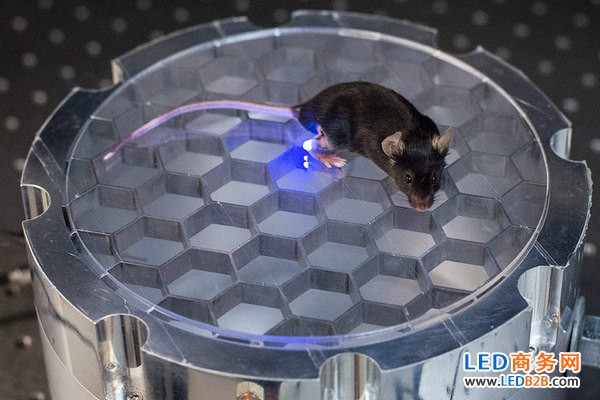
The mouse's own energy is transmitted to the implant device, causing it to emit blue light to stimulate the leg nerves. (Photo: Austin Yee)
First 100% bio-integrated energy-driven optogenetic combination
The energy generated by the self-converted energy of the mouse drives the micro-radio remote control device and causes the blue LED inside to emit light, which uses light to control the nerve cells, spine or limbs of the mouse brain. Developed by the Bio-X team at Stanford University, this design is the first device to deliver optogenetic neurostimulation in a fully implanted manner.
This is a mini-driver that combines optogenetics—the use of light to control brain activity—and the newly invented wireless implant device. The device has greatly expanded the scope of research, enabling researchers to allow mice implanted in the device to interact freely with other organisms in open spaces. The study was published in Nature Methods on August 17.
Inert-inspired mouse avatar wireless receiver
Traditionally, optogenetics requires a fiber to be attached to the head of the mouse to emit light and control the nerves. Although this limited device allows the mouse to move in the cage, it cannot move freely like a mouse without a fiber. Moreover, in the previous experiments, scientists had to contact the mouse to install the fiber, which may cause the pressure of the mouse to change the experimental results.
These unavoidable circumstances have limited the contribution of optogenetics. Scientists have already had some research on seizures, including how to block the hand-shock problem in Alzheimer's patients and the function of neurons to transmit pain and possible treatments for stroke. However, if you study phenomena related to social interactions such as depression or anxiety, or when you need to use other more complex studies such as maze, experimenting with fiber optics can be irritating.
Poon is proficient in making miniature implantable wireless power devices. Although such an ability seems to be useless in the field of optogenetics, Poon participated in a neuroengineering workshop combining neurology and electrical engineering to discover the usefulness of this mini-device.
Before you follow up to make similar devices, so that the tin foil hat swept the network, please be aware that optogenetics can only be applied to the designed nerves, and there must be proteins that respond to light. In the laboratory, some scientists use experiments in mice that breed themselves and carry such proteins, or they will try to inject a virus with DNA of this kind of protein into the nerves of the floss of mice. Generally, undesigned neurons cannot emit light through optical fibers or wireless devices.
Poon said that it is not difficult to develop such a miniature illuminating device. In the months after the workshop ended, she and her colleagues successfully developed the device. The biggest difficulty is how to activate the device (lighting) in a wide range without compromising performance.
In behavioral experiments, mice move around, and researchers must be able to track activities to provide energy. Poon knows that the solution in other laboratories is to have huge and cumbersome devices on the head of the mouse, and to entangle complex coils and sensors to track the mice.
Multifunctional Operating Device For Alps Automobile
Push-Operated Switch,Multi-Function Switch Used By The Camera,Operation Switch For Health Products,Multifunctional Operating Device For Alps Automobile
DA CHENG MINGHUA LIMITED , https://www.alpsswitch.com